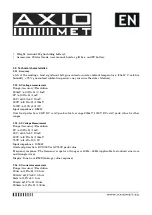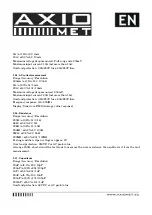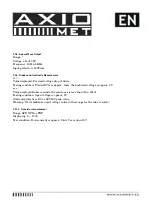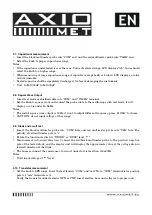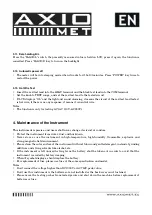
• 2-4. Buzzer indicator lamp
• 3. Knob switch: Used to change the measuring function and range;
• 4. Voltage, resistance and frequency COM
• 5. GND, the anode COM of test accessory.
• 6. 0,2A current test COM, the cathode COM of test accessory
• 7. COM for measuring current 20A
3.2. DC voltage measurement
• Insert the black multimeter probe into “COM” end, and the red multimeter probe into “VΩHz” end;
• Select the knob to a proper DCV range, and connect the test leads crossly to the electric circuit under
test, LCD displays polarity and voltage under test connected by the red test lead.
Notes
• Firstly users should select the knob to the highest range, if users had no idea about the range of voltage
under test, and then select the proper range based on displaying value. If LCD displays “OL” it means
meter is over the max. Value of this range, thus should select the knob to a higher range.
• Do not input to DC Voltage above 1000V or AC above 750V RMS.
• Never contact the high-voltage circuit measured.
3.3. AC Voltage Measurement
• Insert the black multimeter probe into “COM” end, and the red multimeter probe into “VΩHz” end;
• Select the knob to a proper ACV range, and then connect the test leads crossly to the electric circuit
under test.
Notes
• Firstly users should select the knob to the highest range, if users had no idea about the range of voltage
under test, and then select the proper range based on displaying value. If LCD displays “OL” it means
meter is over the max. Value of this range, thus should select the knob to a higher range.
• Do not input to DC Voltage above 1000V or AC above 750V RMS.
• Never contact the high-voltage circuit measured.
3.4. DC current measurement
• Insert the black multimeter probe into “COM” hole, and the red multimeter probe into “mA” or “20A”
hole (maximum 200mA or 20A);
• Select the knob to a proper DCA range, and connect the test leads crossly to the electric circuit under
test; LCD displays polarity and current under test connected by red test lead.
Notes


